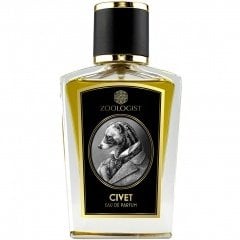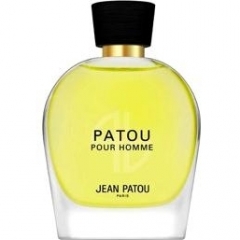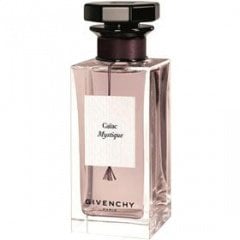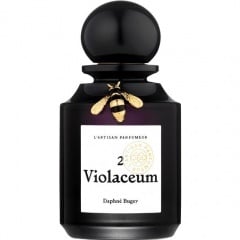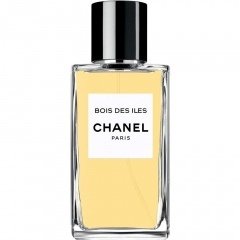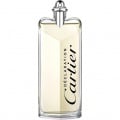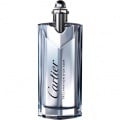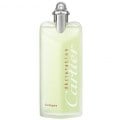
Rickbr
Reviews
Filter & sort
Zoologist Civet
When one thinks of the differences between classical and modern perfumery I believe we can use the evolution of music formats to understand it better. Modern perfumery is very close to contemporary popular music, often built simply, using samples of familiar songs with few layers of sound. Classic perfumery would be the equivalent of recordings on vinyl records and albums where live studio instrumentation adds a wealth of detail that makes the experience very enjoyable for music fanatics.
Like the vinyl, the classic perfumery did not die, but it became a more selective and independent product. Many independent niche houses have creates perfumes with the quality and richness of the classics and one of them is Victor Wong's Zoologist, whose concept of the personification of animals in scents has yielded a collection very bold and diverse in styles.
To honor one of the most well-known animals of the perfumery Victor chose a perfumer who works with classic structures as if they were part of her existence. Shelley Waddington may not be one of the best known in the indie scenario, but her perfumes for her EnVoyage Perfumes are a journey of luxury and olfactory richness and in Civet the perfumer seems to be in one of her best moments.
Civet is one of the most difficult notes to be worked for a contemporary public, especially since the increase of its concentration within a composition will make the perfume progressively fecal, creating a challenging experience. However, the musk extracted from the Civet glands is an excellent fixative and when used wisely becomes a kind of aura that exalts the composition and adds a carnal aspect, giving a new life to the perfume.
The creation here makes me think of great perfumery classics, recreating perfumes from the glory days of the Civet. The impression I have is as if Shelley had studied the creation style of the great master Roudnitska and understood his creation dynamics. Civet works in a dynamic similar to that of one of the great classics of Roudnitska, Femme de Rochas, also remembering his wonderful Diorama (and also referring to a Guerlain classic that works on a similar dynamic of notes, Parure). All these creations are like a melody that combines spices, flowers, fruity notes and a base with nuances of moss and woods.
Civet opens with the sweet and spicy scent of cinnamon and with an impression of a dry spicy aroma that resembles cloves. In the background, you get a scent of plums and peaches giving a velvety, rich and sensual aura to the opening. Coffee is an interesting element, used for its connection with the civet by the type of coffee Kopi Luwak (made from the undigested grains and excreted by the animal). It is interesting that the roasted aroma of the coffee ends up combining with the elements of the opening and also enriching the chypre texture, compensating the current limitations to some classic materials. And it is as Civet evolves that I remember Roudnitska, able to work the carnal and indolic and contrast with the luminosity, freshness and beauty of the flowers. In civet we also have this juxtaposition in a floral body that refers to a mixture of jasmine, ylang, rose and lily of the valley. Sometimes the composition also appears to have a floral and oily appearance and it refers to the exotic touch of the osmanthus.
At last, Civet arrives at its finest moment and you can perceive the bass tone of the idea, a blend of green earthiness of moss with the dry, animalic aroma of the amber and the more creamy, woody scent of sandalwood. And in the background you can finally feel the warm touch and a tiny bit of civet mingling with the resinous and slightly sweet aroma of opoponax and a light powdery touch of iris. It is one of the most complex parts of the composition and one of the moments that often in contemporary perfumery sounds linear and simple. Civet is a masterpiece that preserves the richest and most beautiful in the past and gives a new generation a chance to experience symphonies that otherwise they would not have access to.
Like the vinyl, the classic perfumery did not die, but it became a more selective and independent product. Many independent niche houses have creates perfumes with the quality and richness of the classics and one of them is Victor Wong's Zoologist, whose concept of the personification of animals in scents has yielded a collection very bold and diverse in styles.
To honor one of the most well-known animals of the perfumery Victor chose a perfumer who works with classic structures as if they were part of her existence. Shelley Waddington may not be one of the best known in the indie scenario, but her perfumes for her EnVoyage Perfumes are a journey of luxury and olfactory richness and in Civet the perfumer seems to be in one of her best moments.
Civet is one of the most difficult notes to be worked for a contemporary public, especially since the increase of its concentration within a composition will make the perfume progressively fecal, creating a challenging experience. However, the musk extracted from the Civet glands is an excellent fixative and when used wisely becomes a kind of aura that exalts the composition and adds a carnal aspect, giving a new life to the perfume.
The creation here makes me think of great perfumery classics, recreating perfumes from the glory days of the Civet. The impression I have is as if Shelley had studied the creation style of the great master Roudnitska and understood his creation dynamics. Civet works in a dynamic similar to that of one of the great classics of Roudnitska, Femme de Rochas, also remembering his wonderful Diorama (and also referring to a Guerlain classic that works on a similar dynamic of notes, Parure). All these creations are like a melody that combines spices, flowers, fruity notes and a base with nuances of moss and woods.
Civet opens with the sweet and spicy scent of cinnamon and with an impression of a dry spicy aroma that resembles cloves. In the background, you get a scent of plums and peaches giving a velvety, rich and sensual aura to the opening. Coffee is an interesting element, used for its connection with the civet by the type of coffee Kopi Luwak (made from the undigested grains and excreted by the animal). It is interesting that the roasted aroma of the coffee ends up combining with the elements of the opening and also enriching the chypre texture, compensating the current limitations to some classic materials. And it is as Civet evolves that I remember Roudnitska, able to work the carnal and indolic and contrast with the luminosity, freshness and beauty of the flowers. In civet we also have this juxtaposition in a floral body that refers to a mixture of jasmine, ylang, rose and lily of the valley. Sometimes the composition also appears to have a floral and oily appearance and it refers to the exotic touch of the osmanthus.
At last, Civet arrives at its finest moment and you can perceive the bass tone of the idea, a blend of green earthiness of moss with the dry, animalic aroma of the amber and the more creamy, woody scent of sandalwood. And in the background you can finally feel the warm touch and a tiny bit of civet mingling with the resinous and slightly sweet aroma of opoponax and a light powdery touch of iris. It is one of the most complex parts of the composition and one of the moments that often in contemporary perfumery sounds linear and simple. Civet is a masterpiece that preserves the richest and most beautiful in the past and gives a new generation a chance to experience symphonies that otherwise they would not have access to.
1 Comment
Patou Pour Homme
When Jean Patou began the process of relaunching its historic catalog of classics, one of the most awaited was Patou Pour Homme. Some perfumes end up gaining a mythical status after they are discontinued, with their stocks being sold to gold weight as soon as they become scarce and Patou Pour Homme is one of them. So it is natural that his return to the market was desired and, I believe, feared as well. Would the Heritage Collection version be up to the height of the original?
Testing the perfume launched in the 80's, it's easy to see why it has become such a beloved creation. Patou Pour Homme is a complex, harmonic and rich perfume, a classic that does what the classics does best: play a melody that even if it is not new is harmonic and never gets boring. Despite being classified as an oriental fougere, its aroma is so rich that it gives edge to a spicy sand also chypre side, it all depends on how you interpret it. The opening has a spicy clove aroma amid a drier citrus. The civet, though present, is well balanced by the earthy scent of patchouli and the smell of rubbery leather, a leather that seems to depend heavily on the molecule isobutylquinoline. Although the oak moss is not declared in the notes, it is easy to see its earthy and moist presence mingling with patchouli, civet, leather and spices. The cooler and lighter fougere part is not so easy to be observed, with the freshness of the lavender and the herbaceous and sweet touch of the coumarine easily blending into the leather and patchouli aura.
As much as Patou Pour Homme is a beautiful perfume, a chypre leather that brings me to classics such as Bandit, Azuree and Aramis Pour Homme, is a perfume that relies heavily on elements that have been severely restricted by IFRA over time. Perhaps because of this, the current version launched at Heritage sounds less complex and more direct, with a more evident focus on the classical fougere structure. This is a new Patou Pour Homme, which shares with the classic the name and the basic idea. The scent of moss, the rubbery leather, and the spicy tones are all gone. In its place, we have a more brilliant citrus opening, something that smells like lemon and bergamot right away. As it begins to evolve, the new Patou Pour Homme gains the clean, herbaceous contour of the combination of lavender, sage and coumarin, a very classic and timeless fougere aura. Jasmine is used as in a classic fougere, giving a subtle and subtle sensual floral tone. The base has a less earthy patchouli, it is more musky and has a light leathery aroma, something that perhaps reminds a little bit of suede in its aroma.
Using the two of them one after the other it is clear that it is possible to appreciate the Heritage Collection version on its own merits, since if you see it as a re-release of the classic of the 80's it disappoints the most faithful and loyal fans. Unfortunately, reviving a perfume with the same characteristics of the original Patou Pour Homme is not only a project without guarantee of sales success, is also an illegal project by the restrictions established by the current regulatory bodies.
Testing the perfume launched in the 80's, it's easy to see why it has become such a beloved creation. Patou Pour Homme is a complex, harmonic and rich perfume, a classic that does what the classics does best: play a melody that even if it is not new is harmonic and never gets boring. Despite being classified as an oriental fougere, its aroma is so rich that it gives edge to a spicy sand also chypre side, it all depends on how you interpret it. The opening has a spicy clove aroma amid a drier citrus. The civet, though present, is well balanced by the earthy scent of patchouli and the smell of rubbery leather, a leather that seems to depend heavily on the molecule isobutylquinoline. Although the oak moss is not declared in the notes, it is easy to see its earthy and moist presence mingling with patchouli, civet, leather and spices. The cooler and lighter fougere part is not so easy to be observed, with the freshness of the lavender and the herbaceous and sweet touch of the coumarine easily blending into the leather and patchouli aura.
As much as Patou Pour Homme is a beautiful perfume, a chypre leather that brings me to classics such as Bandit, Azuree and Aramis Pour Homme, is a perfume that relies heavily on elements that have been severely restricted by IFRA over time. Perhaps because of this, the current version launched at Heritage sounds less complex and more direct, with a more evident focus on the classical fougere structure. This is a new Patou Pour Homme, which shares with the classic the name and the basic idea. The scent of moss, the rubbery leather, and the spicy tones are all gone. In its place, we have a more brilliant citrus opening, something that smells like lemon and bergamot right away. As it begins to evolve, the new Patou Pour Homme gains the clean, herbaceous contour of the combination of lavender, sage and coumarin, a very classic and timeless fougere aura. Jasmine is used as in a classic fougere, giving a subtle and subtle sensual floral tone. The base has a less earthy patchouli, it is more musky and has a light leathery aroma, something that perhaps reminds a little bit of suede in its aroma.
Using the two of them one after the other it is clear that it is possible to appreciate the Heritage Collection version on its own merits, since if you see it as a re-release of the classic of the 80's it disappoints the most faithful and loyal fans. Unfortunately, reviving a perfume with the same characteristics of the original Patou Pour Homme is not only a project without guarantee of sales success, is also an illegal project by the restrictions established by the current regulatory bodies.
1 Comment
Gaiac Mystique
Like all the other maisons who realized they were losing sales to the niche sector, Givenchy launched in 2014 its collection of more exclusive, sophisticated and, of course, more expensive perfumes. The focus relies on the portrait of the preciousness of materials, a haute couture approach brought to the world of perfumery in this type of collection.
Basically, the brand is following the market both in concept and in olfactory tendencies and Gaiac Mystique reflects this well. Its theme is more romantic than dark and its aroma is a kind of semi gourmand and incense iris that came into fashion after the success that Dior Homme made throughout its life. The brand does not disclose which perfumer has created Gaiac Mystique , but the signature itself seems typical of Daniela Andrier, especially the work that Andrier did for the exclusive collection of another label also managed by LVMH - Bvlgari.
Although the focus is on Gaiac's wood, Gaiac Mystique is more of an iris scent than Gaiac itself. Here we have the construction of a slightly powdery and creamy iris, complemented by touches of vanilla and tonka bean. The Gaiac confers its sweetish woody creaminess, but as everything is done to appear linear and homogeneous its ends up not standing out so much. What is most noticeable here is a smoky, slightly fresh incense nuance, something that seems to pass between the elemi and the frankincense and which seems to be present just to give the mystical touch promised by the name.
Overall, Gaiac Mystique fulfills what is expected of an exclusive collection, but Givenchy arrived late in this field; thus it does not have much margin to stand out from what has already been done and this is reflected in the perfume itself. It is a chic and pleasant olfactory aura, but a "haute chic" with no remarkable personality.
Basically, the brand is following the market both in concept and in olfactory tendencies and Gaiac Mystique reflects this well. Its theme is more romantic than dark and its aroma is a kind of semi gourmand and incense iris that came into fashion after the success that Dior Homme made throughout its life. The brand does not disclose which perfumer has created Gaiac Mystique , but the signature itself seems typical of Daniela Andrier, especially the work that Andrier did for the exclusive collection of another label also managed by LVMH - Bvlgari.
Although the focus is on Gaiac's wood, Gaiac Mystique is more of an iris scent than Gaiac itself. Here we have the construction of a slightly powdery and creamy iris, complemented by touches of vanilla and tonka bean. The Gaiac confers its sweetish woody creaminess, but as everything is done to appear linear and homogeneous its ends up not standing out so much. What is most noticeable here is a smoky, slightly fresh incense nuance, something that seems to pass between the elemi and the frankincense and which seems to be present just to give the mystical touch promised by the name.
Overall, Gaiac Mystique fulfills what is expected of an exclusive collection, but Givenchy arrived late in this field; thus it does not have much margin to stand out from what has already been done and this is reflected in the perfume itself. It is a chic and pleasant olfactory aura, but a "haute chic" with no remarkable personality.
 Rickbr 7 years ago
Rickbr 7 years ago
2 Violaceum
One of the pioneers in niche perfumery, L'Artisan Parfumeur differs in its main line from the approach that ended up consolidating and defining the sector in recent years. I perceive that its line has a more abstract and creative face with less focus on both the author and the note itself - even perfumes named after a certain material (such as Premier Figuer) are still more complex and abstract compositions than what often appear in other niche brands. With the Natura Fabularis line the brand seems to go in a direction that unites what has been done in the market with its identity.
It comes to me mainly tje influence of two major competitors of the brand in the niche sector in aspects of the line. In Natura Fabularis L'Artisan seems to channel the focus on the perfumer, something that has consolidated and became part of the identity of Frederic Malle. At the same time, it uses the numbering in the identity in a similar way to Le Labo, however indicating the number of attempts of the perfumer until arriving at the final result. Finally, the brand, even if it looks at the abstract, turns more to something concrete, an imaginary garden working in different textures and seeking to evoke romantic and dark sensations (in the same way as Givenchy in its Gaiac Mystique).
All this conceptualization does not fail in 2 Violaceum because the perfumer Daphné Bugey does an excellent job in capturing an ephemeral and fragile violet. Violet is a note more versatile than it looks in the perfumery, being able to be worked in directions like powdery, green, aquatic and even leather. The perfumer finds a way to balance the most melancholy and retro side of sweet powdery violetwith the darkest leather aspect of it. For this, we have the carrot giving a certain earthiness and balancing the powdery and sweet side of the idea while the saffron gives a dry spicy aura and a nuance of leather. Secondary green violets nuances are present along with an aura of musk to give depth to a linear and harmonic scent on the skin. It is an idea that has its beauty in the simplicity and harmony of the elements and that certainly works by the fine adjustment of the composition and not by the novelty of the proposed elements.
It comes to me mainly tje influence of two major competitors of the brand in the niche sector in aspects of the line. In Natura Fabularis L'Artisan seems to channel the focus on the perfumer, something that has consolidated and became part of the identity of Frederic Malle. At the same time, it uses the numbering in the identity in a similar way to Le Labo, however indicating the number of attempts of the perfumer until arriving at the final result. Finally, the brand, even if it looks at the abstract, turns more to something concrete, an imaginary garden working in different textures and seeking to evoke romantic and dark sensations (in the same way as Givenchy in its Gaiac Mystique).
All this conceptualization does not fail in 2 Violaceum because the perfumer Daphné Bugey does an excellent job in capturing an ephemeral and fragile violet. Violet is a note more versatile than it looks in the perfumery, being able to be worked in directions like powdery, green, aquatic and even leather. The perfumer finds a way to balance the most melancholy and retro side of sweet powdery violetwith the darkest leather aspect of it. For this, we have the carrot giving a certain earthiness and balancing the powdery and sweet side of the idea while the saffron gives a dry spicy aura and a nuance of leather. Secondary green violets nuances are present along with an aura of musk to give depth to a linear and harmonic scent on the skin. It is an idea that has its beauty in the simplicity and harmony of the elements and that certainly works by the fine adjustment of the composition and not by the novelty of the proposed elements.
Bois des Iles EDP
One of the most classic perfumes of the Les Exclusifs line, Bois des Iles has always impressed me with its creamy, rounded and powdery texture, something that did not depend on Indian sandalwood but that managed to create a luxurious texture in that vein. With its relaunch in EDP concentration the impression I have is that Chanel did not make a mere reformulation to adjust its dynamics to this concentration, but a recontextualization of its scent to make it look more contemporary.
Of the aspects mentioned above, the powdery side was reduced drastically, along with the aldehyde aspect of the opening in the composition. Somehow, the first few minutes of this new version became lighter, a little green perhaps. Then the sandal begins to appear, still creamy and buttery as in the original. It is curious that now at some moments it seems more dry and woody and in others more floral, something in the same direction perhaps of the Samsara, as if the ylang had become more evident and with the sandalwood they produced this illusion.
There are some secondary notes that appear in certain moments of the perfume and that before did not stand out or did not exist in the Bois des Iles. At heart, there is a kind of creamy, delicate scent that make you think of the scent of roses but does not resemble roses itself. And at the base there is an impression of something amber, resinous and a hint of spice as well. It is as if Bois des Iles was now moving to something more unisex: neither so floral and powdery, nor so woody and dry. Although this new version seems to me well thought out and executed, it gives an impression that the perfume in exchange part of its soul for usability.
Of the aspects mentioned above, the powdery side was reduced drastically, along with the aldehyde aspect of the opening in the composition. Somehow, the first few minutes of this new version became lighter, a little green perhaps. Then the sandal begins to appear, still creamy and buttery as in the original. It is curious that now at some moments it seems more dry and woody and in others more floral, something in the same direction perhaps of the Samsara, as if the ylang had become more evident and with the sandalwood they produced this illusion.
There are some secondary notes that appear in certain moments of the perfume and that before did not stand out or did not exist in the Bois des Iles. At heart, there is a kind of creamy, delicate scent that make you think of the scent of roses but does not resemble roses itself. And at the base there is an impression of something amber, resinous and a hint of spice as well. It is as if Bois des Iles was now moving to something more unisex: neither so floral and powdery, nor so woody and dry. Although this new version seems to me well thought out and executed, it gives an impression that the perfume in exchange part of its soul for usability.

